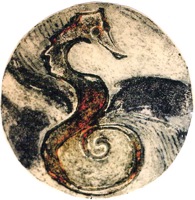Diameter
Etymology
Middle English diametre, from Middle French, from Latin diametros, from Greek, from dia- + metron measure
- Date: 14th century
Definitions
- 1 : a chord passing through the center of a figure or body
- 2 : the length of a straight line through the center of an object
- 3 : a unit of enlargement used with a number to indicate magnification by a lens or optical system <an object one millimeter wide magnified 40 diameters appears 40 millimeters wide>
Description
In geometry, a diameter of a circle is any straight line segment that passes through the center of the circle and whose endpoints are on the circle. The diameters are the longest chords of the circle. The word "diameter" derives from Greek διάμετρος (diametros), "diagonal of a circle", from δια- (dia-), "across, through" + μέτρον (metron), "a measure".
In more modern usage, the length of a diameter is also called the diameter. In this sense one speaks of the diameter rather than a diameter, because all diameters of a circle have the same length, this being twice the radius.
For a convex shape in the plane, the diameter is defined to be the largest distance that can be formed between two opposite parallel lines tangent to its boundary, and the width is defined to be the smallest such distance. For a curve of constant width such as the Reuleaux triangle, the width and diameter are the same because all such pairs of parallel tangent lines have the same distance. [1]
